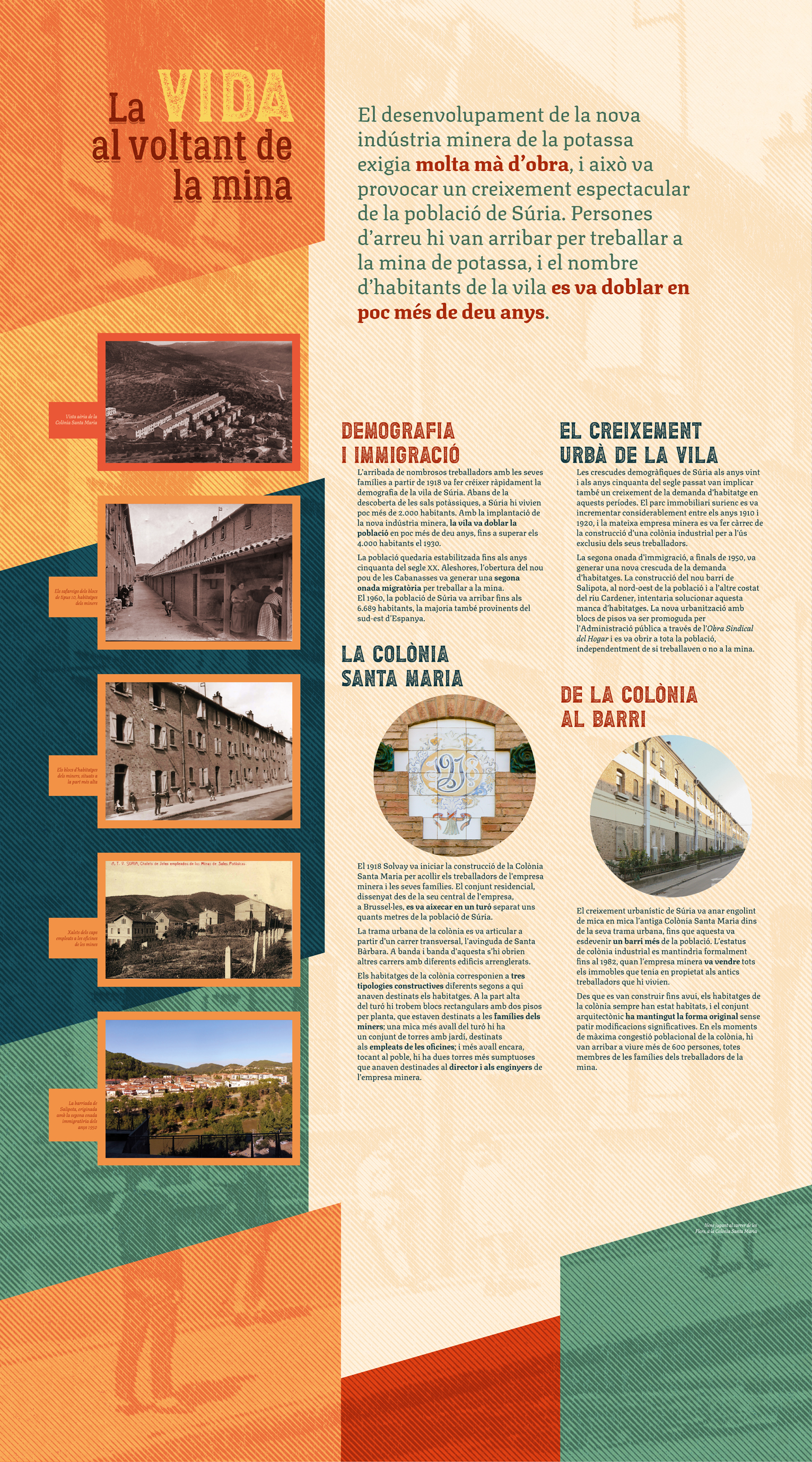5. LIFE AROUND THE MINE
The development of the new potash mining industry required a lot of labour, and this would cause a dramatic growth in the population of Súria. People from all over came to work in the potash mine, and the town's population doubled in just over ten years.
Throughout the 20th century, a whole new world would be born around the mining complex with people coming from many different places around the world, especially from the south-east of Spain. This mixture has forged a unique character and idiosyncrasy.
DEMOGRAPHY AND IMMIGRATION
The arrival of numerous workers with their families from 1918, made the demography of the town of Súria grow rapidly. Before the discovery of potassium salts, just over 2,000 inhabitants lived in Súria. With the establishment of the new mining industry, the town doubled its population in just over ten years, reaching over 4,000 inhabitants in 1930.
This population number would stabilize until the 1950s. Then, the opening of the new Cabanasses shaft would generate a second wave of migration to work in the mine. In 1960, the population of Súria reached 6,689 inhabitants, most of them also coming from the south-east of Spain.
THE TOWN'S URBAN GROWTH
The demographic growth of Súria in the twenties, and the fifties of the last century, also implied a growth in the demand for housing in these periods. Súria’s real estate increased considerably between the years 1910 and 1920, and the mining company itself took charge of the construction of an industrial colony for the exclusive use of its workers.
The second wave of immigration at the end of 1950 generated a new increase in the demand for housing. The construction of the new neighbourhood of Salipota, to the northwest of the town, and on the other side of the Cardener River, would solve this lack of housing. The new urbanization with blocks of flats was promoted by the public administration through the Obra Sindical del Hogar and was open to the entire population, regardless of whether they worked in the mine or not.
COLÒNIA SANTA MARIA
In 1918, Solvay began the construction of the Santa María colony to house the workers who came to work for the mining company and their families. The residential complex, designed by the company's headquarters in Brussels, was built on a hill a few meters away from the town of Súria.
The urban plot of the colony was articulated from a transversal street, the Avinguda de Santa Bárbara. On both sides of this, there were other streets with different buildings lined up. The homes in the workers' village corresponded to three different construction types according to who the homes were intended for. At the top of the hill, we find rectangular blocks with two apartments per floor, which were intended for the miners' families; a little further down the hill there is a set of villas with a garden, intended for office workers; and further down, touching the town, there are two other, more sumptuous villas that were intended for the director and the engineers of the mining company.
FROM LA COLÒNIA TO THE NEIGHBORHOOD
The urban growth of Súria gradually engulfed the old Santa María colony within its urban plot, until it became another neighborhood of the population. The status of the industrial colony would formally remain until 1982 when the mining company sold all the properties it owned to the former workers who lived there.
From its construction until today, the homes of the colony have always been inhabited, and the architectural ensemble has maintained its original form without undergoing significant modifications. In the moments of maximum population congestion in the colony, more than 600 people came to live there, all of them members of the families of the mine workers.


